-
Car Reviews
- All reviews
- Midsize SUVs
- Small cars
- Utes
- Small SUVs
- Large SUVs
- Large cars
- Sports SUVs
- Sports cars
- Vans
Latest reviews
- Car News
-
Car Comparisons
Latest comparisons
- Chasing Deals
In a car market drowning in SUVs, the Subaru Outback manages to be both unique and incredibly popular. So we decided to find out why by attempting to clock 10,000km in a top-spec MY21 Outback Touring over the next six months
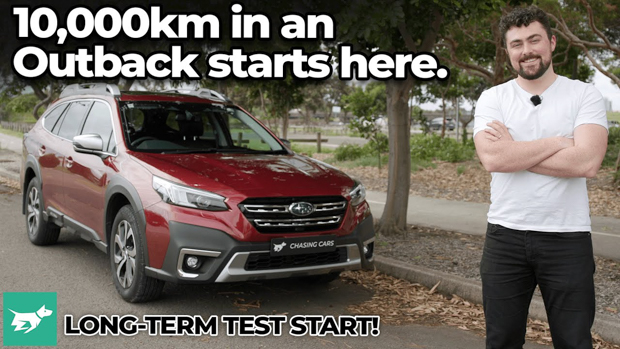
The arrival of the sixth-generation Subaru Outback in February 2021 marked the continuation of an anomaly in the tastes of Australian buyers, for here is a station wagon that contemporary punters actually want to buy – in considerable numbers, as it turns out.
With 10,490 sold here last year, the Outback finished third in its category – ‘large SUVs’ under $70,000, would you believe – behind the all-conquering Toyota Land Cruiser Prado (21,299 sales) and within striking distance of the new-generation Isuzu MU-X (10,618 sales).
The Outback may be considered a ‘large SUV’ but anyone with a set of eyes will tell you it’s quite obviously a raised and cladded station wagon – the first of its kind, kick-starting a category that now includes the Volkswagen Passat Alltrack, Audi A4 Allroad, Volvo V60 Cross Country and even the Porsche Taycan Cross Turismo, as well as a heap of others (Holden Adventra, Skoda Octavia Scout, Volvo V70 XC, Mercedes-Benz E-Class All-Terrain, and even the Volkswagen Cross Polo).
But is the original arguably the best?
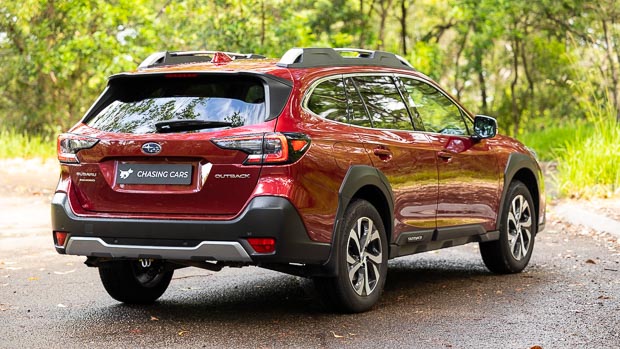
Subaru launched the first-generation Outback at the New York Motor Show in 1994 laying out the ‘off-road wagon’ formula that has now been successfully replicated over six generations, to the point where the Outback has completely buried the Subaru Liberty that spawned it (aside from North America).
With a name like ‘Outback’, it’s quite clear that this Subaru was aiming this butched-up Liberty directly at the hearts of Aussies right from the get-go, but what is it that makes the Outback so popular?
To answer this question, we’ve recruited a Crimson Red Outback Touring into the Chasing Cars garage for the next six months to separate facts from marketing and find out if this wagon lives up to its reputation as a go-anywhere family car and, ultimately, if you should consider buying one.
We’ll update this review with new entries over time as Tom Place details his experiences in the Subaru Outback Touring, which we’re running for six months and 10,000km.
| Kilometres this month: | 1755km |
| Fuel economy this month: | 10.9L/100km |
| Running costs this month: | $211.07 (fuel) |
Over the last six months and 10,000 kilometres (10,014 to be exact), I’ve learnt a lot about this 2021 Outback Touring, the Subaru brand as a whole, and perhaps even a little about myself and my maturing taste in cars.
The final two months of my Outback ownership experience has been a busy period for the team, and it saddens me to say that for two of those weeks, ‘my’ Crimson Red wagon sat completely idle in the Chasing Cars garage.
Climbing back into those Nappa leather seats after an extended pause surprised me with how much I missed getting behind the wheel, and this is despite its flaws, which are still apparent even after six months’ worth of perspective.
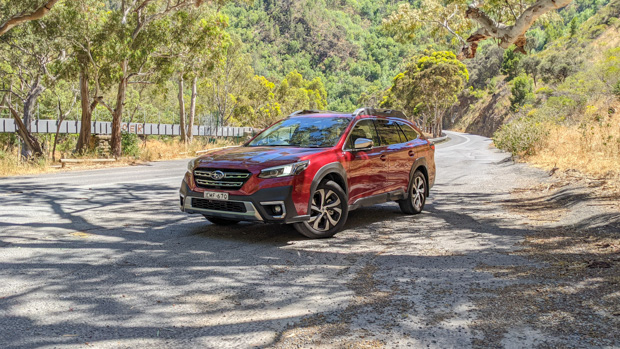
First and foremost, the 138kW/245Nm 2.5-litre flat-four remains a low point in the Outback’s tool kit. While its meagre outputs do feel more substantial than the figures would suggest, it still needs another 20 percent more in the engine department to properly motivate a car of this size.
This would be more forgivable if the Outback wasn’t such a guts. Over the course of six months, the Subie drank 10.0L/100km on average – which hurt all the more when skyrocketing fuel prices saw me paying over $120 a tank. Ouch!
Subaru can do better here and, previously, it has. Back in 2018, editor Tom Baker reviewed the previous-generation Outback with Subaru’s discontinued 2.0-litre turbo-diesel flat four, and it sipped just 6.2L/100km in combined conditions.
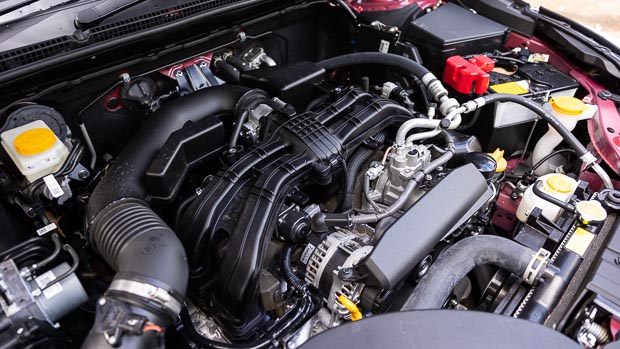
For this reason, I was incredibly excited to hear that Subaru has confirmed that the 2.4-litre turbo-petrol flat-four will supplement the Outback’s Australian range early next year, packing much healthier outputs of 194kW/375Nm and I suspect potentially superior fuel economy in some conditions thanks to its under-stressed nature.
As far as ergonomics go, the Outback is generally solid, and over time I got used to the awkward phone holder under the touchscreen, though extensive use of gloss black cabin material became a magnet for dust.
Additionally, the novelty of having a CD player in the glovebox quickly wore off – I’d much rather a larger glovebox thanks Subaru!
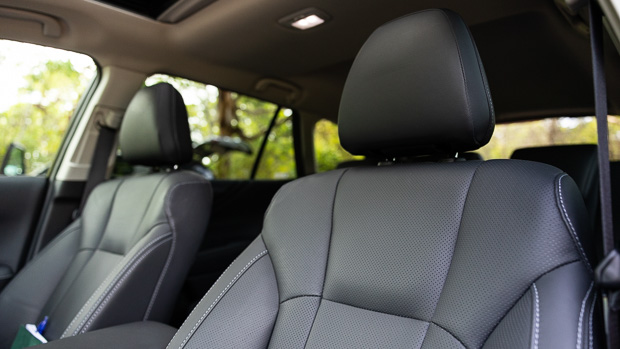
Earlier this year, Subaru America announced its facelift for the Outback and while the version coming to Australia in 2023 will likely wear a different exterior (thank god), I’m hopeful a number of these niggling issues will be ironed out.
Subaru Australia has bolstered the already extensive list of features on the top-spec Touring since our 2021 model rolled out the factory – namely the addition of manual under-thigh adjustment and front-seat ventilation, the latter of which would certainly have been appreciated during the hot summer months.
This subtle evolution, combined with rising production costs, has seen the price of the Outback Touring spike by $2000 since my long-termer left the dealer forecourt – a considerable increase from the typically well-priced Subaru brand.
But even wearing a higher $49,790 sticker price (before on-road costs), I’d argue that the Outback Touring is still terrific value for money, though if it was my money I would absolutely be waiting for the arrival of the 2.4-litre turbo-petrol version next year.
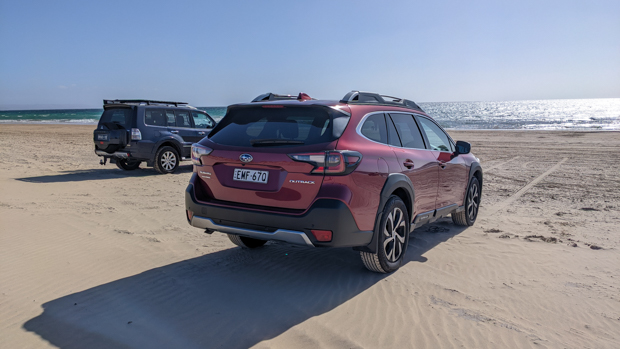
If one thing has stood out to me during my sixth months with the Outback, it’s the fact that this rather humble family wagon doesn’t excel in any one discipline. Rather, it serves as a dependable all-rounder which is at least ‘pretty good’ at everything you need it to do.
It’s easy to spot weak points in the Outback’s arsenal such as its lack of outright performance, its multimedia package and, at times, wayward body control. But the fact remains that it nails the fundamentals that really matter to most people.
By offering a vehicle that is unique yet practical, incredibly safe and actually affordable, Subaru has once again managed to cut through to Australian buyers, and as an expectant father myself, the Outback is a vehicle I could genuinely see myself wanting to purchase.
| Kilometres this month: | 1061km |
| Fuel economy this month: | 9.7L/100km |
| Running costs this month: | $539.33 (fuel and service) |
Although I found myself warming to our Subaru Outback Touring long-termer in our first few weeks together, the same could not be said for deputy editor Nathan Ponchard who found himself being abruptly thrown around in a Sydney backstreet one evening.
Bewildered, Ponch scanned the area to identify what exactly in the empty street triggered the Outback’s autonomous emergency braking (AEB) system, but there was nothing to be seen and thankfully there was no one driving behind him either.
Active-safety systems are great to have, but only if they work effectively. And this misfire of an emergency stop, combined with the Outback’s eager lane-keep assist function (that turns on at the start of every trip), left us feeling that it needed some further fine tuning.
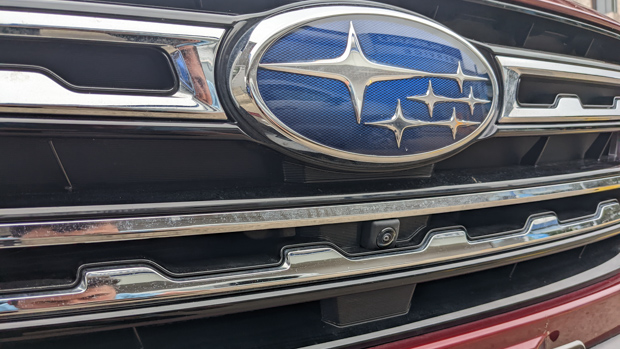
During my time with the car I’ve slowly given up on turning off the lane-keep-assist function unless I find myself on a country road, but thankfully Subaru developed a more permanent fix for the AEB system.
As it turns out, our MY21 Outback long-termer was one of 5402 vehicles affected by a nation-wide recall for an overzealous AEB system, so I quickly scheduled an appointment with Suttons Subaru Rosebery.
The overall dealership experience was fine, though I believe more emphasis should be paid on informing owners exactly why they’ve been forced to take significant time out of their day to bring their brand-new car in for a fix.
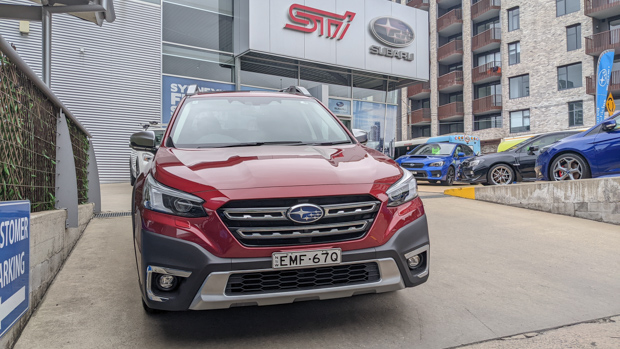
Subaru Australia deserves praise for sending out the recall quickly in November 2021, however – shortly after the new Outback’s Australian launch. And, to its credit, I’ve seen no signs of the issue months after I took our car in to get ‘fixed’.
After racking up some serious kilometres on a round-trip from Sydney to Adelaide, the Outback was due for its 12,500km/12-month service, and it couldn’t have come at a better time.
I’ve spoken previously about the rattle on the far passenger-side air vent, which had now started to make a soft hum at highway speeds but became far louder under acceleration.
Thankfully, the mechanics were able to track down and silence the plastic clatter, and the service itself was completed without issue. Subaru’s capped-price servicing meant I would have paid $349.54 for this minor service if I owned the vehicle personally – not bad.
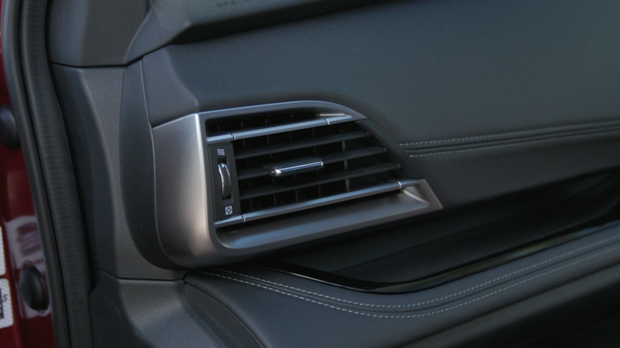
While not trying to be melodramatic, my experience with the Outback and its undoubted ability as a quiet highway cruiser felt wounded by the rattle, and I couldn’t help thinking ‘will the next 10,000km in this car be peppered with even more annoying issues such as this?’
Upon reflection, however, the dash rattle feels inconsistent with the otherwise solid build quality of the Subaru Outback. The doors still close with a solid thud every time, the shut lines are consistent and the multimedia and safety system have never let me down.
As the end of my six-month tenure with the Outback Touring approaches, I’m preparing my final thoughts as I write this, so stay tuned.
| Kilometres this month: | 1142km |
| Fuel economy this month: | 10.1L/100km |
| Running costs this month: | $289.71 (fuel) |
If there’s one thing that has become apparent during my ownership experience with an MY21 Subaru Outback Touring over the last few months it’s just how bloody useful the thing is. And because of this fact, I’ve actually found myself driving it quite a lot.
Taking a few mates and all their gear away for the weekend? No problem. Picking up some shelves from Bunnings? Fold down the rear seats and be amazed at the space.
But how about if you want to take this utility to the next level and, say, tow a Mazda MX-5 track car to a circuit on the weekend? Well, that requires some further investigation.
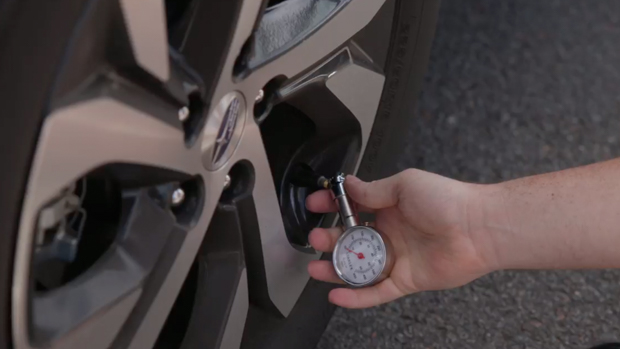
Subaru has passionately touted the sixth-generation Outback’s ability to tow up to 2000kg braked, despite the somewhat anaemic 138kW/245Nm 2.5-litre naturally aspirated flat four being the only engine currently offered (though, it should be noted, a beefer 194kW/375Nm 2.4-litre turbo-petrol flat four is set to arrive next year).
This new braked towing limit is a healthy increase over the 1800kg rating of its 191kW/350Nm 3.6-litre flat-six predecessor, as well as the 1700kg rating of the old 110kW/350Nm 2.0-litre turbo-diesel. And it blows away the 1500kg rating of the previous 129kW/235Nm 2.5-litre Outback.
Engineers say the switch to a stronger ‘Subaru Global Platform’ in the latest-generation Outback is the main reason for the increase, but other factors such as improved engine and transmission cooling, along with a stronger rear differential, have all contributed to the substantial increase in the Outback 2.5’s towing capability.
To see if Subaru’s claim held any merit, we hooked up a car trailer and drove out to our proving ground of choice on the infamous M1 Pacific Motorway. This hostile stretch of tarmac is one of the busiest freeways in Australia and while it’s limited to 110km/h for much of its length – travelling up and down some seriously steep and winding hills – that speed limit often appears academic during peak periods, as it has done for generations.
In order to get our towing load right on the limit of the Outback’s 2000kg capacity, I recruited my personal Mazda MX-5 that clocks in at a featherweight 1057kg – well, at least until my chunky arse climbs in!
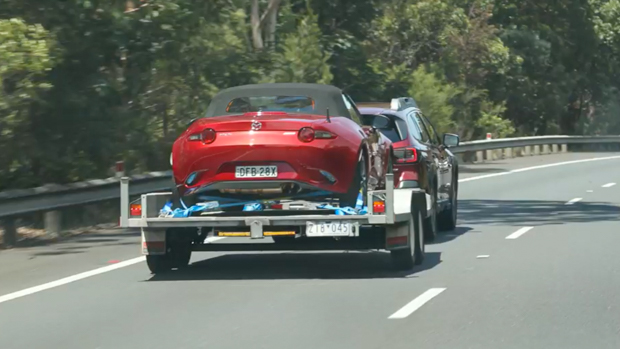
Once strapped securely to the trailer, we saw a combined weight of around 1995kg, with roughly 200kg of that sitting on the ball.
As the more experienced hand of the team, deputy editor Nathan Ponchard climbed into the Outback’s comfortable driver’s seat and eased into the throttle as he began his slow but steady ascent from the northern side of the Hawkesbury River Bridge.
I’ve spoken previously about my begrudging respect for the Outback’s CVT transmission on the highway when unladen and here, once again, it justifies its implementation over a traditional torque-converter auto or dual-clutch ’box by holding the revs at a productive 5500rpm and not faffing about with ‘gearing’, real or simulated.
As a result, the Outback feels stronger than you might expect when towing such a heavy load, and while it’s certainly not rapid, Ponch was able to keep up with traffic and gradually accelerate from 90 to 110km/h when travelling uphill.
It’s a shame, then, that the smarts of the CVT transmission are accompanied by such an amount of noise inside the cabin every time we tackled an incline. The drone is not only prominent but also doesn’t inspire a lot of confidence in you as a driver that the hardware is within its limits – even though it definitely is.
A clear sign of this was the stability of the cooling during our tow test. With the needle refusing to budge from its natural centre point on the temperature gauge, despite towing the Outback’s maximum capacity and two blokes on a 35°C day – all while blowing crisp and consistently chilled air-con.
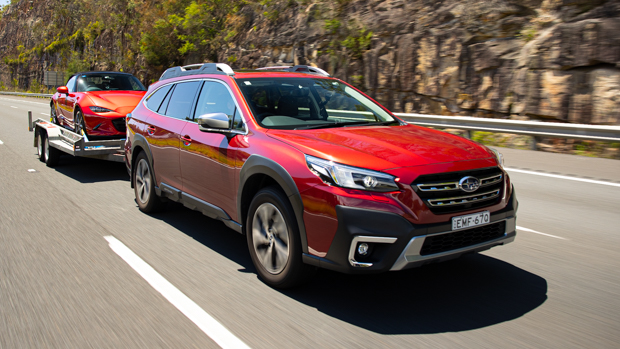
It may come as a surprise that the Outback’s greatest weakness is not under the bonnet but in how its suspension handles the load, as the relatively soft set-up resulted in a rear end that felt overly keen to roll about.
A feeling of instability is not what you want when towing a serious load such as this, and while the wayward behaviour is controllable with smooth steering inputs, if you’re planning on towing 2000kg on a regular basis – especially one with such a high centre-of-gravity – it may be wise to look at aftermarket options.
Overall, however, Ponch was surprised by the Outback’s towing ability, and with that mission completed, Subaru has successfully added a two-tonne tool to its arsenal of SUVs and wagons.
Next month we’ll be covering some technical issues I’ve discovered in the Outback, and how we went about trying to fix them. Also, please note that the fuel costs for this month were blown out by skyrocketing fuel prices at the time – which, as we know, is an ongoing factor
| Kilometres this month: | 4115km |
| Fuel economy this month: | 8.22L/100km |
| Running costs this month: | $567.00 (fuel) |
There is something quintessentially Australian about embarking on a road trip across our beautiful but brutal country that lately seems to offer up sweltering heat one minute and treacherous rain the next.
Historically, the Subaru Outback has flexed its muscles in these kinds of variable and difficult conditions – not via an innate ability for one particular strength like off-roading but through its adaptability across multiple disciplines.
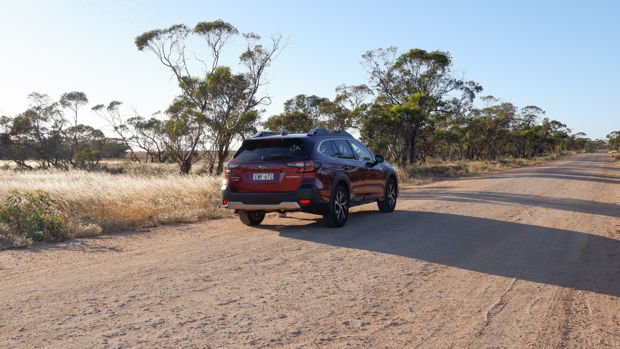
Given its proclivity for all-season activity, my wife and I decided to test its mettle on a circa-3000km interstate haul. Once or twice a year we pack a holiday load and our dog Buddy into the car and embark on a marathon return trip from Sydney to our birthplace in Adelaide.
As a generally impatient person, I’ve almost always tackled this in one 15-hour, 1420km sprint – a test of endurance that has exposed the weaknesses of every vehicle I’ve driven, without fail – so it’ll be interesting to see how a top-spec Outback Touring fares.
Being a meticulous packer, I begin by loading up the Outback the night before – appreciating not only the size of its 522-litre boot but also the eight tie-down points that allow me to secure our luggage properly. Yet that fails to minimise the pain of waking up to a piercing alarm the following morning, then pouring ourselves and our young pup into the Outback at an unseemly 3.30am.
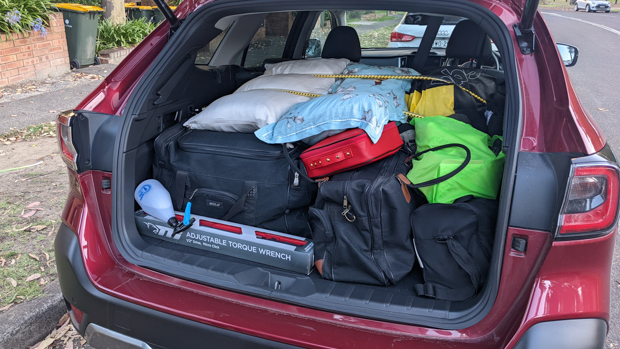
Out of the ’burbs and onto the highway, as the clock ticks over to 6.00am I slowly begin to understand the nuances of the Outback’s supple dynamic nature that has only been exacerbated by the additional weight in its boot that has pitched the nose slightly skyward. It’s a car that rewards subtle inputs, particularly when it’s dealing with a big load, yet you soon find a rhythm and discover that comfort is what underpins the Outback driving experience.
Despite the absurd hour of the morning, there is still traffic to contend with. And it quickly becomes clear that the Outback’s 2.5-litre naturally-aspirated flat-four is hard at work as it hurtles past semi-trucks and cedes into the left lane to avoid the wrath of lifted-dual-cab drivers.
With 138kW of power and 245Nm of torque on tap, Subaru’s atmo boxer is unlikely to be christened with an ‘STI’ badge anytime soon, however those mediocre figures prove more motivating than I was expecting.
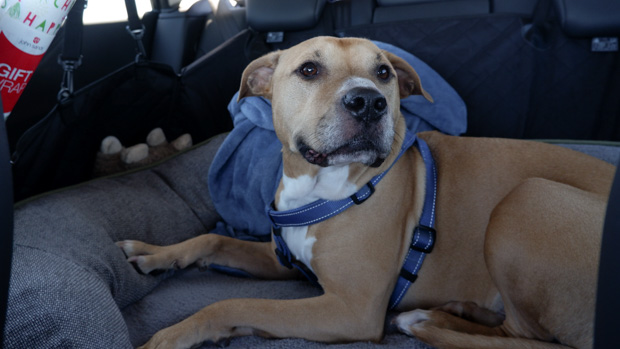
Subaru often cops some flack – including from myself – over its bloody-minded determination to use CVT transmissions in everything, which seem to specialise in sucking out the fun while increasing cabin drone in equal measure. But there is some masterful thinking in the tuning of this transmission that propels the Outback along with surprising pace – even with luggage loaded to the window-line. The drivetrain may not have a whole lot in reserve but it knows how to maximise everything it has to best effect.
As midday arrives, it’s time for a driver change so my wife hops behind the wheel, I familiarise her with the controls and then prepare to take a well-earned nap.
I’ve spoken previously about my love for the Outback’s comfy seats but Subaru’s decision to treat the front passenger as a second-class citizen and provide no adjustable lumbar support is disappointing. Without sufficient shape to enforce good posture, I find myself feeling more fatigued as the odometer ticks over – impatiently waiting to get back in the driver’s seat, which thankfully doesn’t take long.
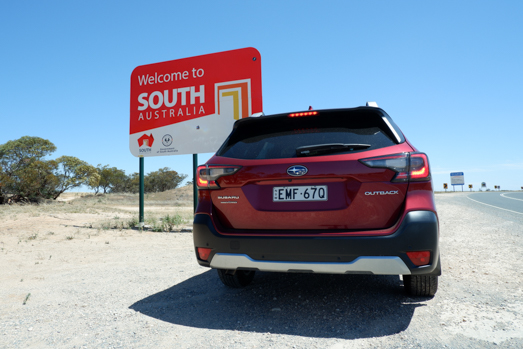
The suspension arrangement for the Outback is somewhat unusual in having struts up front and independent double-wishbones at the rear, yet the end result is an experience that is wonderfully comfortable. Learning how to best attack the bends, however, requires some experimentation.
With precise inputs, the Outback can be pivoted into a corner at speed with ease. But the longer the bend and the greater the cornering load, the more it starts to feel unsettled – a signal for the driver to ease off the throttle and allow the Outback to regain its surefooted feeling, some margin from the limit of its dynamics.
As we persevere into the afternoon and the roads become rougher, a gentle rattling from the air vent on the left side of the dash begins to grow louder and louder. It’s the first quality issue that I’ve encountered with this otherwise very well-built Outback Touring, and crystallises exactly why Chasing Cars chooses to run these long-term vehicles in the first place: more mileage could expose more issues.
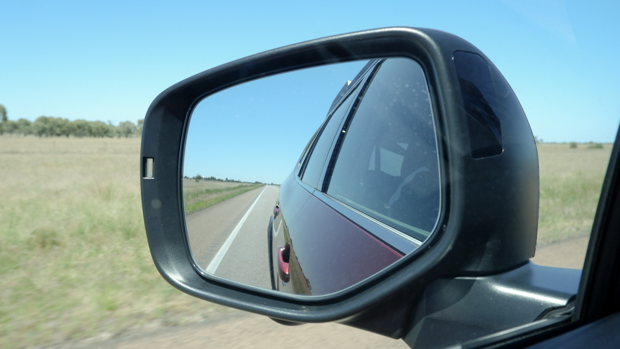
As you’d expect, the rattle soon becomes slightly maddening but thankfully it’s only really noticeable under peak acceleration – and I wasn’t doing much of that in the middle of nowhere. Out on the flat plains west of Ouyen, the Outback’s adaptive cruise control and CVT transmission form a solid bond keeping it moving along swiftly but beneath the hungry eyes of police radar.
By the time we reach Adelaide in the late afternoon, my wife and I feel undeniably tired, but more refreshed than we’ve ever felt before after this marathon interstate blast. And for that I can only thank our (largely) quiet and comfortable chariot of choice – one that also proves to be quite economical.
Extracting maximum performance at every opportunity failed to decimate the Outback’s fuel economy. Across the entire trip, I averaged 7.86L/100km using regular unleaded – and that figure would likely have been even better if I wasn’t such a hoon.
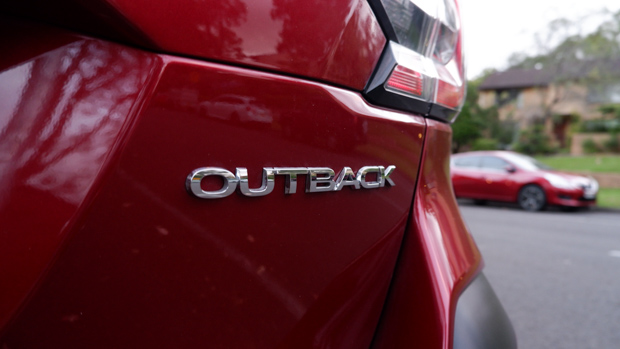
| Kilometres this month: | 185km |
| Fuel economy this month: | 10.2L/100km |
| Running costs this month: | $33.00 (fuel) |
The Crimson Red Subaru Outback long-termer you see here officially landed in our garage late last year, but just as quickly as I was thrown the keys, they were snatched away again for a very good reason.
Waving the flag for wagon lovers everywhere, our MY21-spec Outback was pitted against 10 of Australia’s most popular family cars in the inaugural Chasing Cars midsize SUV mega test.
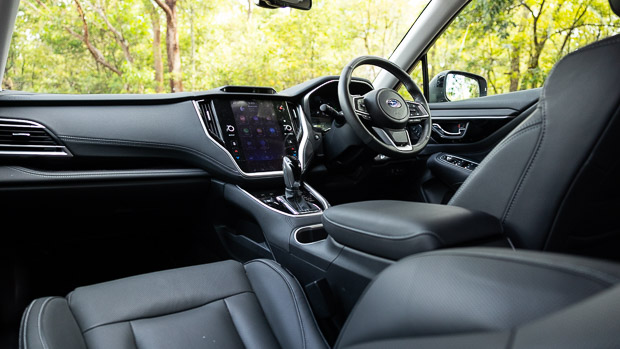
Dressed in top-spec Touring specification with a mid-pack price tag of $47,790 (before on-road costs), the Outback appeared to offer extremely good value among the SUVs that surrounded it. I say ‘good value’ because the Outback Touring actually includes a tonne of kit for the money – a good chunk of which is already included on the base model.
This includes an 11.6-inch ‘portrait’ touchscreen; LED headlights, daytime running lights and fog lights; and enough safety equipment to earn the Outback the gong as the safest car ever tested under ANCAP’s current criteria.
Of course, you don’t just splash an extra $7800 on the top-spec Touring over the base Outback for no reason, and the extra cash does net you multiple extras like heated Nappa leather seats, a nine-speaker Harman Kardon sound system and a charming little CD player hidden beneath the centre armrest.
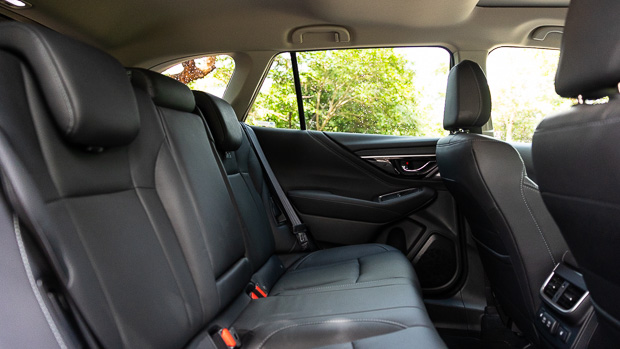
Further to our test car’s wealth of equipment, Subaru has recently updated the MY22 Outback Touring with ventilated front seats and a manual under-thigh adjuster for the driver – though the Touring’s has also increased to a still good-value $48,990 before on-road costs.
Following the Outback’s week-long mega test abuse, it was my turn to become intimately acquainted with it. And what I quickly grew to love is its ability to nail the basics thanks to an easy-to-drive nature, huge 522-litre boot and technology that doesn’t come at the expense of everyday usability.
The Outback’s ride is best described as couch-like and seems well-matched with supportive seats that combine to offer a relaxing in-cabin experience as you waft down the road. And despite all the modern technology on display, Subaru has kept an array of tactile controls for functions like volume and temperature control – tasks which are often difficult to perform when relegated to a touchscreen.

That’s not to say the Outback isn’t without fault. You instantly notice that the USB outlet is positioned in such a way that it makes it challenging to retrieve your phone from storage when plugged in – or even plug the cable in to begin with – and Subaru’s bullish lane-keep assistance feels the need to engage every time you start the car.
I’ve also found the Outback’s 138kW/245Nm 2.5-litre flat-four to be fairly sleepy – it seems to require lots of revs to make decent progress – and I suspect a highway journey may further expose its lack of outright grunt.
Over the remaining five months we plan to investigate every aspect of the Outback’s capability with a tow-test, a 3000km interstate blast and even some moderate off-roading.
But if there’s something you want to know or would like to see us do with the Outback, please send us a message on social media – we’d love to hear from you.
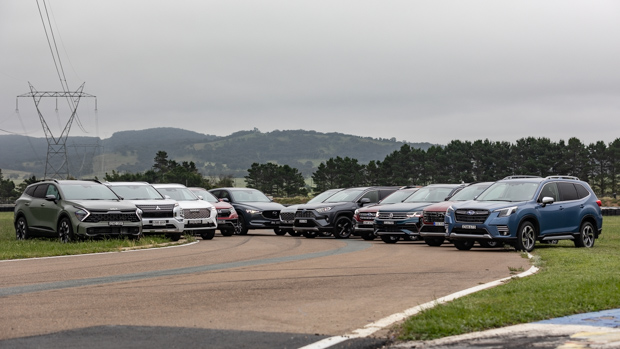
Key specs (as tested)
About Chasing cars
Chasing Cars reviews are 100% independent.
Because we are powered by Budget Direct Insurance, we don’t receive advertising or sales revenue from car manufacturers.
We’re truly independent – giving you Australia’s best car reviews.
The estimate provided does not take into account your personal circumstances but is intended to give a general indication of the cost of insurance, in order to obtain a complete quote, please visit www.budgetdirect.com.au. Estimate includes 15%^ online discount.
^Conditions Apply
Budget Direct Insurance arranged by Auto & General Services Pty Ltd ACN 003 617 909(AGS) AFSL 241 411, for and on behalf of the insurer, Auto & General Insurance Company Limited(ABN 42 111 586 353, AFSL 285 571).Because we don’t know your financial needs, we can’t advise you if this insurance will suit you. You should consider your needs and the Product Disclosure Statement before making a decision to buy insurance. Terms and conditions apply.
Indicative quote based on assumptions including postcode , 40 year old male with no offences, licence suspensions or claims in the last 5 years, a NCD Rating 1 and no younger drivers listed. White car, driven up to 10,000kms a year, unfinanced, with no modifications, factory options and/or non-standard accessories, private use only and garaged at night.
^Online Discounts Terms & Conditions
1. Discounts apply to the premium paid for a new Budget Direct Gold Comprehensive Car Insurance, Third Party Property Only or Third Party Property, Fire & Theft Insurance policy initiated online on or after 29 March 2017. Discounts do not apply to optional Roadside Assistance.
2. Discounts do not apply to any renewal offer of insurance.
3. Discounts only apply to the insurance portion of the premium. Discounts are applied before government charges, taxes, levies and fees, including instalment processing fees (as applicable). The full extent of discounts may therefore be impacted.
4. We reserve the right to change the offer without notice.